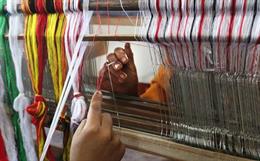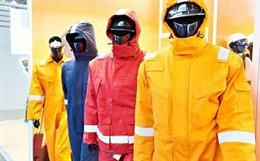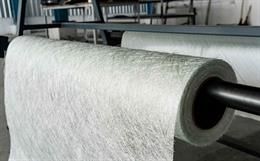When full-body neoprene and polyurethane swimsuits came into prominence at the 2008 Summer Olympics in Beijing, they took the worlds of sports and textiles by storm. Michael Phelps, Paul Biedermann and a host of other swimmers set a huge number of world records wearing these suits before World Aquatics banned their use in 2010. But these technological advancements did not stop in 2010, and the field of sports textiles is constantly growing. Here are a few of the fabrics that have been introduced to the world of sports in the last few years.
Head: Increased Protection Without Sacrificing Comfort
When it comes to safety in any sport (whether it is association football, cricket or shovel racing), protecting the players’ heads is paramount. Acute head injuries such as concussions can have chronic, life-changing effects for years on end. And over the long term, repeated small head injuries can accumulate to cause a deadly neurodegenerative disease called chronic traumatic encephalopathy (CTE) whose symptoms include dementia and aggression. CTE currently has no cure, and its symptoms can first appear eight to ten years after the initial brain injuries, so prevention is the focus of research. In one study in the United States, all but one of the 111 National Football League (American football) players studied had CTE, so this is of particular concern for people who play full contact sports professionally.1
While athletic leagues make changes to their rules to reduce the rate and severity of head injuries in their sports, helmet manufacturers are taking a different approach. Hard helmets can be highly effective when it comes to preventing singular, severe concussions, but companies like BrainGuard are also aiming to reduce the twisting force that bruises the brain, leading to CTE in the first place. BrainGuard’s helmets combine a foam-based textile core with a sturdy outer layer to reduce these impact forces by up to fifty per cent without adding bulk. Even without being integrated into a full-sized helmet, technologies such as the Rezon Halos headband utilise textiles in layers to reduce the transmission of rotational forces to the brain.
Testing and approving these advancements in textiles takes time. In the meantime, one of the most promising stopgap measures is a combination of wearable medical technology and modern textiles. The NoMo helmet integrates electroencephalography sensors into its textile lining to immediately send an alert when the helmet detects any traumatic brain injury. Not only does this allow concussion victims to get help within seconds, but it reduces the chance of misdiagnosis. With long-term use, wearers will even be able to track chronic small injuries, allowing them to make informed decisions regarding CTE and other chronic forms of brain damage. (NoMo also shows great promise in military settings, where time is of the essence for battlefield triage.)
Sports helmets cannot only be designed with safety in mind: they have to be comfortable, as well. If these technical textiles are unpleasant to wear, it will never matter how well they reduce a player’s risk. Thankfully, manufacturers have made great strides in this regard as well. One study published in 2020 explored the utility of warp knitted spacer fabric in motorcycle helmets, testing their air permeability, thermal conductivity and pressure distribution. These new materials can help wearers fine-tune the microclimate inside their helmets, ensuring that they stay cool and comfortable.
Torso and Shoulders: Breathable, Durable Protection
Above all, the textiles used in sports have to be multifunctional. The athletes in every sport have unique priorities when it comes to their clothing, but breathability, absorbency and thermal conductivity are at the top of most sportspersons lists. Therefore, they are at the forefront of designers’ minds when it comes to creating uniforms for sports. In recent years they have gone beyond Lycra, cotton and polyester to enhance the function of sports’ jerseys.
For instance, the sun presents a triple challenge for players of outdoor sports. Not only do they have to deal with its heat and its bright light, but they need to be cognisant of the danger that the sun’s ultraviolet rays bring. This radiation is harmful to both the players and the fabric that comprises their uniforms. An ideal football uniform, for instance, needs to be porous and flexible enough to circulate fresh air toward the wearer’s skin but thick enough to protect them from sunburn. Wool and polyester provide some ultraviolet protection, but they tend not to be breathable. That’s where chemical textile coatings come in. These may include inorganic nanotubes, nanoparticles and graphene. One recent study of these coatings compared these options with an eye toward efficacy and sustainability. Carbon-based coatings showed particular promise in terms of UV protection factor (UPF), enabling breathable, lightweight fabrics such as cotton, rayon and micromodal blends. (As a bonus, this also helps to prevent ultraviolet damage to the fabric.)
A textile’s breathability is also one of the keys to an athlete’s comfort and health. That’s why the Massachusetts Institute of Technology’s Tangible Media Group debuted its bioLogic Second Skin material, and sportswear companies like New Balance jumped at the opportunity to integrate the concept into textiles. This textile, first announced in 2016, utilises the bacterium Bacillus subtilis natto to automatically change the size of a fabric’s pores based on the wearer’s level of moisture. The more the wearer sweats, the more breathable their kit becomes. Even now, New Balance is dedicated to integrating this material into the world of athletics.
The materials are not the only elements of athletic wear that have seen advancement in recent years. New computer software and manufacturing methods have made body mapping technology the new must-have for athletes. This technology, utilised by companies such as Asics in its ACTIBREEZE line and Odlo in its Kinship Collection, takes precise, three-dimensional measurements of the user’s body in order to custom craft clothing without seams. The applications of body mapping technology in sports are numerous: combining innovative materials with digital scanning, manufacturers can create sports textiles that are extra breathable in areas that need it and enhance flexibility at trouble points. Above all, they enhance the athlete’s comfort level, which allows them to focus on their sport.
Waist, Back and Stomach: Comfort for The Body’s Core
Some of the greatest innovations in sports textiles involve smart fabrics. Because smartphones and smart watches have become commonplace in the last ten years, the market for clothing that connects to these devices has exploded. These utilities go far beyond helping amateur athletes, however.
Professional rugby teams, for instance, have been utilising heart rate monitors during training to spectacular effect. Clubs like the Saracens use technology like the Firstbeat sensor, which is embedded into a fabric belt that is worn over the players’ chests. Once applied, the sensor sends real-time data about every athlete to a central database. The coaches and team doctors then monitor this information and use it to customise training and ensure that each athlete is performing to their maximum potential. Although World Rugby does not allow these monitors to be worn in matches, the teams that use them have found them invaluable.
Earlier this year, polytechnic institute ETH Zurich debuted an electronic yarn that can precisely measure the wearer’s motion. Unlike many smart textiles, this yarn makes a stretchable fabric, and it can be sewn directly onto many textiles without sacrificing flexibility. When attached to a loop antenna or other transmitting device, this yarn can send a variety of data to a smartphone or a central hub. The concept is showing promise in a huge variety of applications. By tracking the wearer’s motions, they can prevent exhaustion and help athletes monitor their form and even prevent injuries.
German firm Schoffel is a leading manufacturer of sportswear and equipment for outdoor activities. Recently, it released a line of self-heating ski jackets. These jackets, from the INTELLITEX line, utilise a series of sensors to monitor the wearer’s body temperature and send it to a smartphone app. If that temperature is below the user’s comfort level, it automatically turns on the integrated heater. For marathon runners and athletes in warmer climates, meanwhile, functional textiles have shown great promise in cooling as well. The i-Cool textile and Coollife fabric, both developed in the 2020s, use nanotechnology in different ways to keep wearers cool. Heat stroke is a major concern for athletes in the summer, and even creating wristbands or headbands of these materials is a game-changer when it comes to safety.
Legs And Knees: Shoring Up a Common Point of Failure
An athlete’s lower body may not get as much attention as their head or their torso, but innovations in textiles have not left athletes’ legs behind. Most of the new developments in textiles discussed in this article can be applied to leggings, pants and shorts as well. For instance, the researchers at ETH Zurich demonstrated the concept for their electronic yarn in a set of leggings, with the antenna running down one leg. However, this does not mean that there are no leg-specific innovations in sports textiles!
An athlete’s knees are critical to their performance on the field, rink or pitch. They are also one of a body’s major potential points of failure. Because knee surgery can side-line an athlete for months or even end the athlete’s career, there is a constant flow of innovation in technology to mitigate these injuries or even prevent them from occurring.
One of the top ways that athletes prevent knee injuries is by wearing soft knee braces. Adjustable straps are common in these knee braces because they provide a customised fit. However, these straps can pose serious problems for athletes or other people who move around frequently: they can shift around or create pressure points around the knee, leading to abrasive injuries and bruising. Ergodyne, a United States manufacturer of work gear, recently circumvented this issue with its introduction of lightweight, strapless padded knee sleeves. Although these sleeves (from the ProFlex Series) are designed primarily as personal protective equipment on work sites, they show great promise for use by athletes as well. Goaltenders in ice hockey, for instance, are always looking for more comfortable ways to hold their pads on.
Even after a knee injury occurs, textiles can help athletes get back on their feet, and it does not need to take the form of an external brace. Researchers at Duke University in the United States revealed a lab-made cartilage gel in 2022 that is showing great promise in relieving the pain of a knee injury. This hydrogel material combines thin sheets of cellulose fibres with polyvinyl alcohol to become 26 per cent stronger than natural cartilage and fastening 68 per cent more firmly to bone.2 Moreover, they were able to anneal the gel by freezing and thawing it, making it more suitable for cartilage replacement than most other hydrogels. This innovation is at the bleeding edge of medical textiles as well, and clinical trials in humans began this spring. It may be geared at people with osteoarthritis, but it shows great promise for athletes who suffer chronic knee pain as well.
An even more recent innovation in athletic textiles is a stretchable knee wrap developed by the Singapore University of Technology and Design and SingHealth Polytechnics. The prototype, released in May 2023, does not rely on bulky external sensors or conductive fabric to measure the wearer’s movements. Instead, it utilises a knitted single-fabric circuit to integrate a sensor circuit into a sleeve that covers the wearer’s knee. This makes long-term monitoring a possibility, potentially enabling sports trainers and physical therapists to track their patients’ progress with far greater accuracy and comfort than before.
Clothing and textiles can also be used to relieve an athlete’s pain in other ways. Companies like Venom Sports and Nufabrx have recently come onto the market, creating compression sleeves and braces that integrate patches to deliver pain relief medication directly to an injured or sore area. The companies are also developing compression garments meant to facilitate a patient’s post-surgical recovery.
Feet: Protecting The Body’s Foundation
In 2013, National Hockey League (NHL) player Kevin Bieksa tore his Achilles tendon during a game. This injury was the direct result of contact with an opponent’s skate blade. It was not Bieksa’s first such injury, nor would it be the last time this would happen to an ice hockey player. In the 2019-2020 season alone, the NHL dealt with six skate cuts in fourteen weeks.3 Cut resistant hockey socks have been available for well over a decade now, and they are manufactured by each of the NHL’s main suppliers. However, the league has yet to mandate them (citing issues with comfort, breathability and elasticity). Textile manufacturers are therefore developing more comfortable fabrics that can still protect the wearer. Athletic wear manufacturer Aycane, for instance, recently developed the lightest cut resistant thread in the world, and has used it in its Blade Pro Skate Socks. These socks have already saved Swiss National League defenceman Claudio Cadonau’s calf from a cut that would likely have ended his career without them.
In track and field, as well as sports that involve a lot of running, friction reduction and moisture wicking are the keys to creating high-quality socks. A blister may be a minor injury, but left untreated it can quickly side-line an athlete for the remainder of a race or a game. Slovenian firm Go4Goal, founded by Tadej Glavač, has been developing socks that counteract this since 2018. Not only are the socks custom-shaped for a person’s left and right foot, but specialised grip technology improves grip on shoes and stabilises the areas most prone to blistering. The densely knitted fabric even helps protect the wearer’s ankles from twisting.
Another textile innovation that has both athletic and medical utility is found in compression socks. Athletes have been wearing compression socks to optimise their blood flow and speed up their recovery since the 1980s. Recently, manufacturers have begun to integrate infrared technology into these socks (and traditional non-compression socks) as well. These textiles utilise an extremely fine nano-ceramic powder to reflect the wearer’s own body heat, resulting in enhanced athletic performance, better thermoregulation and faster recovery after workouts. In addition to athletes, people with disabilities such as diabetes and Raynaud syndrome can benefit from this technology. So can retail workers and frequent flyers.
Meanwhile, MIT developed a new textile fabrication process in2022. This smart textile, called EDKnITS, uses a slightly melted plastic yarn to create “smart” shoes, socks and mats. Digital knitting allows this thermoforming to reach new lengths and to custom craft form-fitted items for an individual’s needs. Combined with pressure sensors in the mats, the textile allows machine learning systems to predict the wearer’s motions, from walking and running to complex yoga poses. The machine learning model can then provide feedback on an athlete’s form and possibly provide early warning if someone is at risk of a repetitive stress injury. The MIT Media Lab is especially eager to use this textile to line prosthetic limbs, as it provides the wearer with a precise map of pressure points.
Innovation in athletic textiles doesn’t stop at the textiles’ effect on athletes. Sustainable apparel manufacturer Trere Innovation, based in Italy, launched its Unleash Your Nature (UYN) line of shoes and socks in March 2023. The Biotech base layers of this fabric are made entirely from sustainable materials, including beech, castor oil, eucalyptus and corn. UYN is debuting with international skiing teams, and the line is opening its inaugural store in Boston, Massachusetts in the autumn of 2023.
At the Texprocess Frankfurt trade fair last year, Twine Solutions debuted an innovative update to the TS-1800 machine. While the machine is already in use around the world, this update enables fine-tuning of fabric colours and faster switching between jobs. And as with all Twine’s technologies, the dyeing process uses zero water. Twine partnered with Santoni’s X MACHINE, which produces a seamless sock in five to seven minutes. Three-dimensional intarsia technology allows for endless colour combinations and pattern variations, and with the SbyS (Stitch-by-Stitch) device, even the sock’s toe can be closed automatically. This technology can also be adapted to create shoe uppers without seams as well.
Beyond The Players: Carpet, Artificial Turf and More
Sports textiles are not only about the players, but the playing surfaces as well. While many outdoor sports utilise real grass or dirt, artificial turf is still prominent in many sports. Athletic teams have come a long way from the days of slippery plastic grass, and some of the most exciting advancements in sports textiles are underfoot.
In advance of the team’s 2022-2023 season, the Liverpool Reds F.C. in England installed a hybrid carpet in its arena. This substrate combines polyethylene fibres with a sand infill and real ryegrass to provide a comfortable, safe pitch for the players. More importantly, this hybrid approach halves the pitch’s renovation window, enabling Anfield Stadium to also host more concerts and play-on-pitch opportunities for fans of the team.
AstroTurf, which was the first company to manufacture textile-based playing fields, recently debuted improvements to its TRIONIC PLUS fibre. Not only does this polyethylene and nylon turf use a thermal shield to improve the athletes’ experience, but it includes a carbon-based material called StatBlock into its fibres. This innovation reduces the build-up of static electricity by up to 17 times.4 Antimicrobial silver, meanwhile, provides improved sanitation and kills bacteria before they build up.
These advancements in fibre also allow artificial turf to be used in more locations, and for a wider variety of sports events. These added use cases provide more versatility and operating options, making the fibres accessible to more than professional athletes.
From an athlete’s head to their toes, and even down to the surface they play on, these textile innovations are bringing new life to sports that have existed for millennia. They are contributing to new world records and helping players recover from catastrophic injuries. The future of sports textiles is definitely bright.
- https://www.universityofcalifornia.edu/news/new-helmet-design-can-deal-sports-twists-and-turns
- https://today.duke.edu/2022/08/lab-made-cartilage-gel-outperforms-real-thing
- https://theathletic.com/1701417/2020/03/26/amazing-it-doesnt-happen-more-often-how-nhl-players-dealwith-skate-cuts-columbus-blue-jackets/
- https://astroturf.com/astroturf-introduces-wonder-fiber-trionic-plus/

 (1)_Big.jpg)





